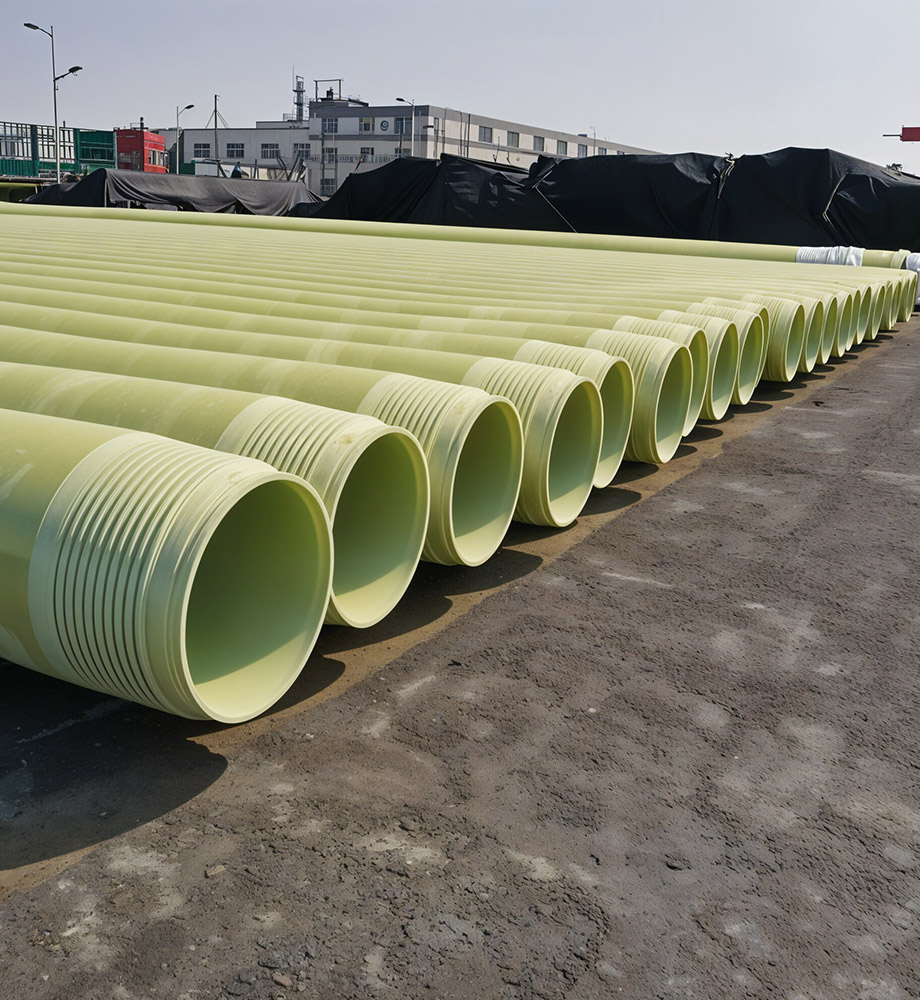Key Features
- High-tensile filament-wound construction (epoxy resin with high-strength glass fiber) for superior strength-to-weight.
- Corrosion and chemical resistance in saltwater, H₂S/CO₂ environments and acidic fluids – GRE does not rust or pit.
- Lightweight design enables easier handling and installation versus heavy steel tubing.
- Range of sizes (1½″–9⅝″) and pressure classes (up to ~3500 psi) for various well conditions.
- Compliance with ISO 14692 and API specifications ensures quality and safety.
- Premium threaded connections (e.g. 4 TPI “Downhole” threads) or butt-and-wrap adhesive joints for leak-tight service.
- High-temperature epoxy curing (up to ~212°F/100°C) for sustained performance.
Benefits
- Long service life in corrosive wells – GRE can significantly outlast steel in aggressive downhole fluids.
- Reduced downtime and maintenance: rusting and scaling are minimized, lowering intervention frequency.
- Improved safety: non-conductive pipe prevents galvanic corrosion and interference with downhole sensors.
- Cost-effective: lighter pipe saves on rig-up labor and reduces shipping costs, yielding lower total cost of ownership.
- Eliminates need for corrosion inhibitors or exotic alloys in many well environments.
Applications
- Oil & Gas Wells: Production tubing and casing in wells with CO₂, H₂S or high salinity.
- Injection and Disposal Wells: Saltwater and chemical injection wells where steel would corrode.
- Geothermal Wells: Handling hot brines in geothermal energy drilling.
- Monitoring Wells: Observation wells requiring non-conductive, chemical-resistant materials (avoiding interference with sensors).
- Water Supply / Irrigation: Potable or irrigation wells with highly abrasive or corrosive water.
Technical Specifications (Typical)
- Material: Filament-wound glass-fiber reinforced epoxy (GRE)
- Diameter (Nominal): Ranges from 1½″ to 9⅝″ (40 mm to 250 mm)
- Pressure Rating: Up to approximately 3500 psi (24.1 MPa)
- Maximum Temperature: Up to 212°F (100°C)
- Joint Length: Nominal length of 30 ft (9.1 m)
- Connection Types: Threaded (e.g. 4 TPI DH), Tapered adhesive, ANSI flanges
- Applicable Standards: ISO 14692, API Q1
Unique Selling Points (USPs)
- Proprietary Layering: Advanced filament-winding sequences yield higher tensile strength and collapse resistance than competitive GRE designs.
- Extensive Track Record: Proven usage since the 1990s in major oilfields (e.g. Chevron Australia, Olympic Dam) with ongoing support and service.
- Custom Engineering: Our in-house well-simulation program (STARWell) helps select and tailor tubing designs for specific well conditions.
- Onsite Support: Comprehensive make-up tools and handling equipment are available, with field service to ensure correct installation and joint integrity.
- Comprehensive Compliance: Meets stringent offshore and onshore standards for safety and quality (e.g. API, ISO) to ensure reliability in demanding well operations.

